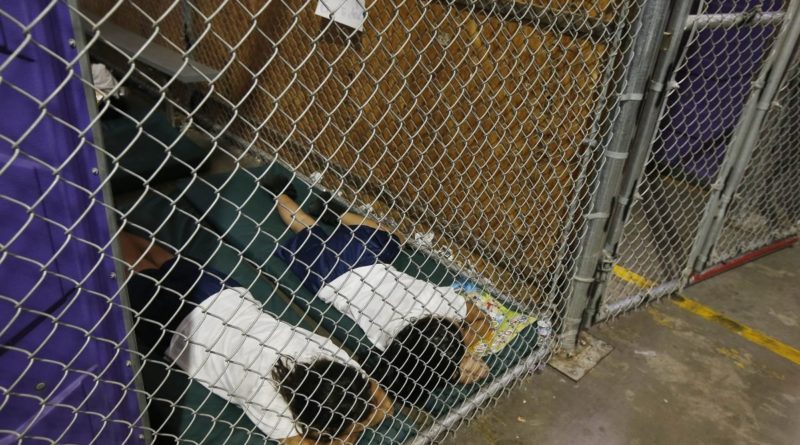The court can’t fix asylum laws, only Congress can
We understand why immigration leads to a raucous and, too often, heated public policy debate. But what we fear is that this debate, especially the portion of it that centers on those fleeing oppression and seeking asylum in the United States, is losing sight of the people whose lives are at stake in this fight.
We’ll stipulate, as we have many times before in editorials, that it is critically important for the United States to have robust border controls, a legal process that is adhered to, and consequences for people who break the law. Our question in engaging in this debate, however, is always this: What should the law be?
In terms of asylum, it’s critically important that this country remain a refuge for those fleeing tyranny. By being that refuge, we undercut tyranny abroad. And by offering asylum, over the course of our history we have taken in millions of people who went on to serve this country with distinction.
So it is with some disappointment that we watched the U.S. Supreme Court’s decision last week to stay an injunction on the Trump administration’s latest attempt to restrict asylum for those fleeing Central and South America.
Put a little more plainly, the rule change in question — which requires that asylum seekers who enter the U.S. from our southern border first seek asylum in a third country, almost certainly Guatemala or Mexico — took effect on July 16 without the usual preceding comment period.
As Supreme Court Justice Sonia Sotomayor wrote in an incisive dissent, the rule is “especially concerning” because it “topples decades of settled asylum practices and affects some of the most vulnerable people in the Western Hemisphere — without affording the public a chance to weigh in.”
For this reason alone, a California District Court was right to enjoin the rule. But, as Sotomayor points out in her dissent, joined by Justice Ruth Bader Ginsburg, the lower court “found it probable that the rule was inconsistent with the asylum statute” which “provides that any noncitizen ‘physically present in the United States or who arrives in the United States … may apply for asylum.'”
And while there are “carefully calibrated exceptions” to asylum eligibility, namely “on the possibility that a person could safely resettle in a third country,” the Trump administration’s rule “does not consider whether refugees were safe or resettled in Mexico — just whether they traveled through it.” That “blunt approach,” said Sotomayor, “rewrote the statute.”
Moreover, the idea that asylum in Mexico or Guatemala is somehow equivalent to asylum in the U.S. is not based in fact. America has its problems with crime and violence, but its unequaled freedoms, long-established rule of law, and unparalleled economic opportunities are a magnet for millions of hopeful immigrants as well as a place of refuge from war and persecution for, in President Ronald Reagan’s words, “anyone with the will and the heart to get here.”
America is a unique place. Not only can you find safety here, but you can assimilate and become American. Take for example, Hung Ba Le, one of millions of Vietnamese who fled after the fall of Saigon in 1975. He was fortunate enough to arrive in America as a refugee and has gone on to an illustrious career in the U.S. Navy that included not only the U.S. Naval Academy but that also included, a decade ago, serving as the commanding officer of a destroyer, the USS Lassen, that docked in Vietnam.
This kind of story would be unusual or impossible in many parts of the world. But here, and other free countries, it’s more common than many might realize. Or put another way, the U.S. military and the ranks of corporate America are full of native speakers of other languages because people from all backgrounds can and do subscribe to the idea that is America and become Americans.
Instead of finding ways to more swiftly and judiciously evaluate the claims of all asylum seekers, the Departments of Justice and Homeland Security adopted a rule that only applies to asylum seekers “who enter or attempt to enter the United States across the southern land border after failing to apply for protection from persecution or torture while in a third country through which they transited” while traveling to the U.S.
It’s worth pointing out that most Central Americans in the U.S. aren’t newcomers. According to the Migration Policy Institute, nearly half of the roughly 3.5 million Central American immigrants residing in the U.S. as of 2017 came before 2000, many fleeing brutal civil wars in the region. Between 1980 and 1990, in the midst of devastating civil wars in Nicaragua, El Salvador and Guatemala, the Central American immigrant population in the U.S. tripled.
Today, while economic and political instability remain a major problem, the power of drug cartels and organized crime has led to a near complete collapse of the rule of law and in many cases the corruption of local law enforcement in the Northern Triangle countries of Guatemala, Honduras and El Salvador. That and the droughts and failed crops that have plagued the region is why people are fleeing.
President Donald Trump called the Supreme Court’s decision to stay the injunction on the rule a “BIG United States Supreme Court WIN for the Border on Asylum!” We respectfully disagree, and hope the court strikes it down when it eventually rules on the key issue involved, not just on the temporary injunction from a district court. Regardless of where the court lands, what’s needed in Texas and across the country is a congressional fix to our asylum laws and on immigration policy more broadly.
OTHER VIEWPOINTS: DALLAS MORNING NEWS

